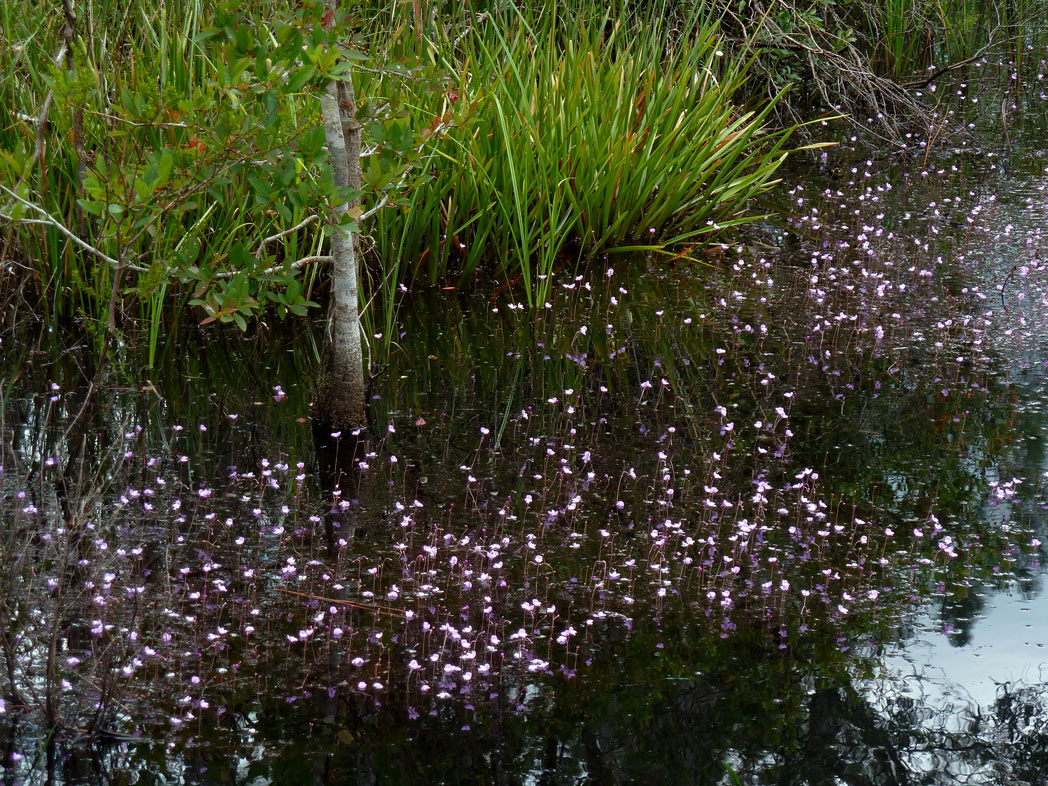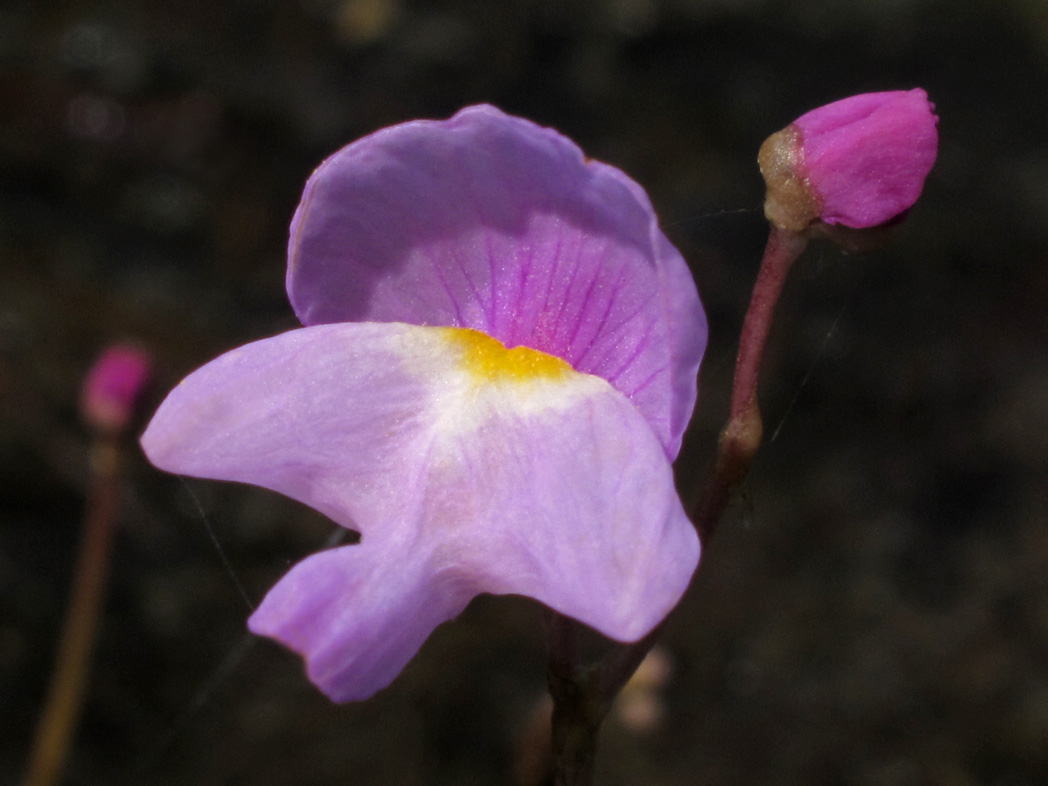Eastern purple bladderwort
Pictured above: Eastern purple bladderwort (Utricularia purpurea) by Alan Cressler, Lady Bird Johnson Wildflower Center. Click on terms for botanical definitions. View post as a PDF
Eastern purple bladderwort is an aquatic carnivorous plant found in wetlands, freshwater swamps and shallow ponds and lakes throughout Florida. Its small but showy lavender flowers bloom year-round. This highly specialized plant feeds on insects and other small organisms caught in its bladder-like trap. Unsuspecting prey brush against tiny hairs that trigger a trapdoor. As the door closes, the organism and water are sucked into the bladder. With the bladder full and the door closed, the plant releases enzymes to digest the organism. The whole process takes less than a second and is one of the most sophisticated processes in the plant kingdom.

Eastern purple bladderwort (Utricularia purpurea) by Eleanor Dietrich
Eastern purple bladderwort’s flowers are pale purple and two-lipped. The upper lip has a violet patch in its center, and the lower lip bears a white patch with a bright yellow center. Flowers grow to about ½ inch long and are born atop thick flower stalks that extend several inches above the water line. Leaves are finely divided, giving them a lacy appearance. They are arranged in whorls of 5 to 7 leaves and are generally submerged. Small ovoid bladders emerge from leaf tips. The plant has no roots. It spreads via a matrix of underwater stems. Seeds are born in minute dehiscent capsules.
The genus name Utricularia is from the Latin utricularius, meaning “bagpiper” or “one who uses animal bladders.” The species epithet purpurea is from the Latin purpureus, meaning “purple.” There are 14 species of Utricularia native to Florida; most have yellow flowers, but four have purple.
Family: Lentibulariaceae (Bladderwort family)
Native range: Nearly throughout
To see where natural populations of Eastern purple bladderwort have been vouchered, visit florida.plantatlas.usf.edu.
Hardiness: Zones 8A–10B
Lifespan: Annual or perennial
Soil: Wet to inundated, poorly drained acidic soils; shallow, tannic water
Exposure: Full sun
Growth habit: Up to 6” tall
Eastern purple bladderwort is not commercially available. Visit a natural area to see it.

